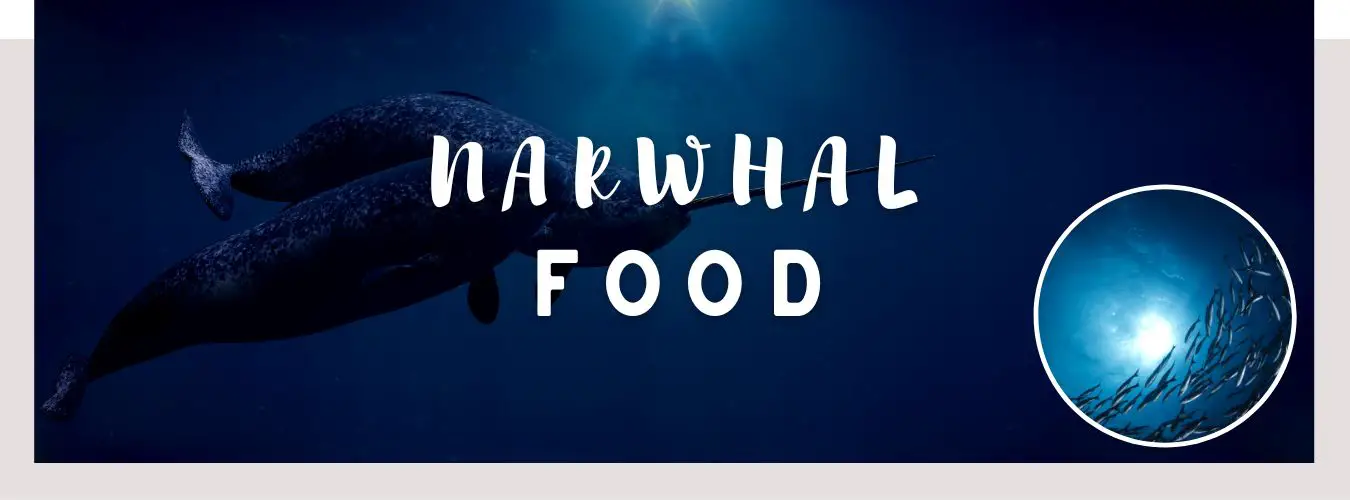
Narwhals are fascinating creatures that live in the Arctic waters and are known for their unique tusk, which is actually a long, spiral tooth. But, what do these creatures eat? In this article, we’ll delve into the diet of narwhals and explore the various food sources that sustain these amazing animals.
So, what do narwhals eat?
Narwhals are carnivorous mammals and feed on a variety of prey, including fish, squid, and shrimp. However, their primary food source is Greenland halibut, a type of flatfish that is found in the cold waters of the Arctic. Narwhals have been observed diving to depths of over 1,500 meters in search of their preferred food, making them one of the deepest diving mammals in the world.
You might also like: What Do Blue Catfish Eat?
Hunting and Foraging Techniques

Narwhals primarily hunt using echolocation, which allows them to locate their prey by emitting high-pitched clicks and listening for the echoes that bounce back. This technique enables them to detect the presence and location of potential prey, even in the dark and murky waters of the Arctic.
Narwhals hunt alone or in small groups, and their preferred hunting grounds are the shallow waters near the edge of the continental shelf. They have also been observed hunting near ice floes and in the open ocean, where they chase after schools of fish and squid.
Seasonal Changes in Diet
Narwhals’ diet is influenced by seasonal changes in the Arctic waters. During the summer months, when the waters are relatively warm, narwhals feed on a variety of prey, including fish, squid, and shrimp. However, as the waters cool in the winter, their food sources become more limited, and they primarily rely on Greenland halibut.
The Importance of a Diverse Diet
A diverse diet is essential for the health and survival of narwhals. Not only does it provide them with the necessary nutrients to maintain their energy levels, but it also helps them to adapt to changing environmental conditions. For example, during periods of food scarcity, narwhals may switch to alternative food sources, such as shellfish or crustaceans, to ensure their survival.
You might also like: What Do Narwhals Eat?
The Threats to Narwhal Food Sources

Unfortunately, narwhals face many threats to their food sources, including climate change, overfishing, and industrial activities. As the Arctic waters warm, some of their preferred food sources, such as Greenland halibut, may become scarce or move to other areas, making it more difficult for narwhals to find food. Overfishing and commercial fishing operations can also reduce the populations of certain fish and squid, further reducing the food available to narwhals.
In addition, industrial activities, such as oil and gas exploration, can result in the release of pollutants into the Arctic waters, which can have a harmful effect on the food chain and reduce the availability of food for narwhals.
Conclusion
Narwhals are fascinating creatures that rely on a diverse diet to survive in the harsh Arctic waters. Although they primarily feed on Greenland halibut, they also consume a variety of other prey, including fish, squid, and shrimp. However, they face many threats to their food sources, including climate change, overfishing, and industrial activities, which can reduce the availability of food and threaten their survival.
In conclusion, we hope this article has provided you with a deeper understanding of the diet of narwhals and the challenges they face in finding food in the Arctic. To learn more about these amazing creatures and the efforts being made to protect them, we encourage you to continue exploring the world of narwhals.









